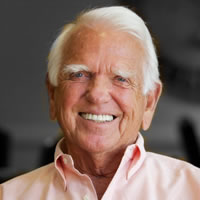Question: As US Senator Mary Landrieu, D-LA., recently became the chair of the US Senate’s Energy and Natural Resources Committee do you expect her to be an effective chair of the committee?
Answer: Senator Landrieu has a history of knowledge and understanding of energy and environmental issues confronting the energy industry. She has been a strong advocate of the energy industry.
Question: The State of Alaska is moving forward with a plan for a $50 billion “All-Alaskan Gas Pipeline” (AAGP). What is the status of this project?
Answer: The project will take “stranded gas” from the North Slope to the Kenai Peninsula to a LNG (Liquefied Natural Gas) facility. From the facility/port LNG will be exported to Asian markets. The project is estimated to take six year to construct.
Question: In January of this year, there was the alert that there was the threat of a power outage in Texas, is this true?
Answer: Yes, this past January, a warning went out that it was important that reduction of electric usage was needed. The risk of power outages was strongly possible. According to an article by Loren Steffy, “in January, power plants unexpectedly went offline when the state needed them most. This time blackouts were averted, but barely”. He goes on to state “as the threat of rolling blackouts in winter and summer demonstrates, Texas isn’t producing enough electricity to meet our needs.”
Question: Is OPEC (Organization of Petroleum Exporting Countries) still a threat?
Answer: OPEC is not as strong a threat as in the past. As Daniel Yergin stated in an article in the Wall Street Journal, October 15, 2013, “the real lesson of the shock of 1973 and the second oil shock set off by the overthrow of Iran’s Shah in 1979 is that they provided incentives—and imperatives—to develop new resources…Imports reached 60% of domestic consumption in 2005, but they are now down to 35%…As the US imports less oil it also produces more to the benefit of energy security.”
Question: What are Intangible Drilling and Development Costs (IDC)?
Answer: They are costs incurred in preparing well locations, drilling and deepening wells, and preparing wells for initial production up through the point of installing control valves. None of these functions, because of their nature, have salvage value. Such costs would include labor, transportation, consumable supplies, drilling tool rentals, site clearance and similar costs.
Question: Why is there the use of hydraulic fracturing?
Answer:
1) To increase productivity (the volume of oil or gas produced from the well),
2) In terms of shale formations, it is perhaps the only way to complete a commercial well, and
3) to enhance the cumulative reserves ultimately recovered from the well.
Together we can Create the People’s Energy Plan! Go to www.peoplesenergyplan.com to join the effort.
Facebook: America Needs America’s Energy with over 10,000 supporters plus and growing. — America Needs America’s Energy: Creating Together the People’s Energy Plan!

 Sidney Powell
Sidney Powell Jim Lauderdale
Jim Lauderdale George Nigh
George Nigh Kristen & Jessica Bardwil
Kristen & Jessica Bardwil